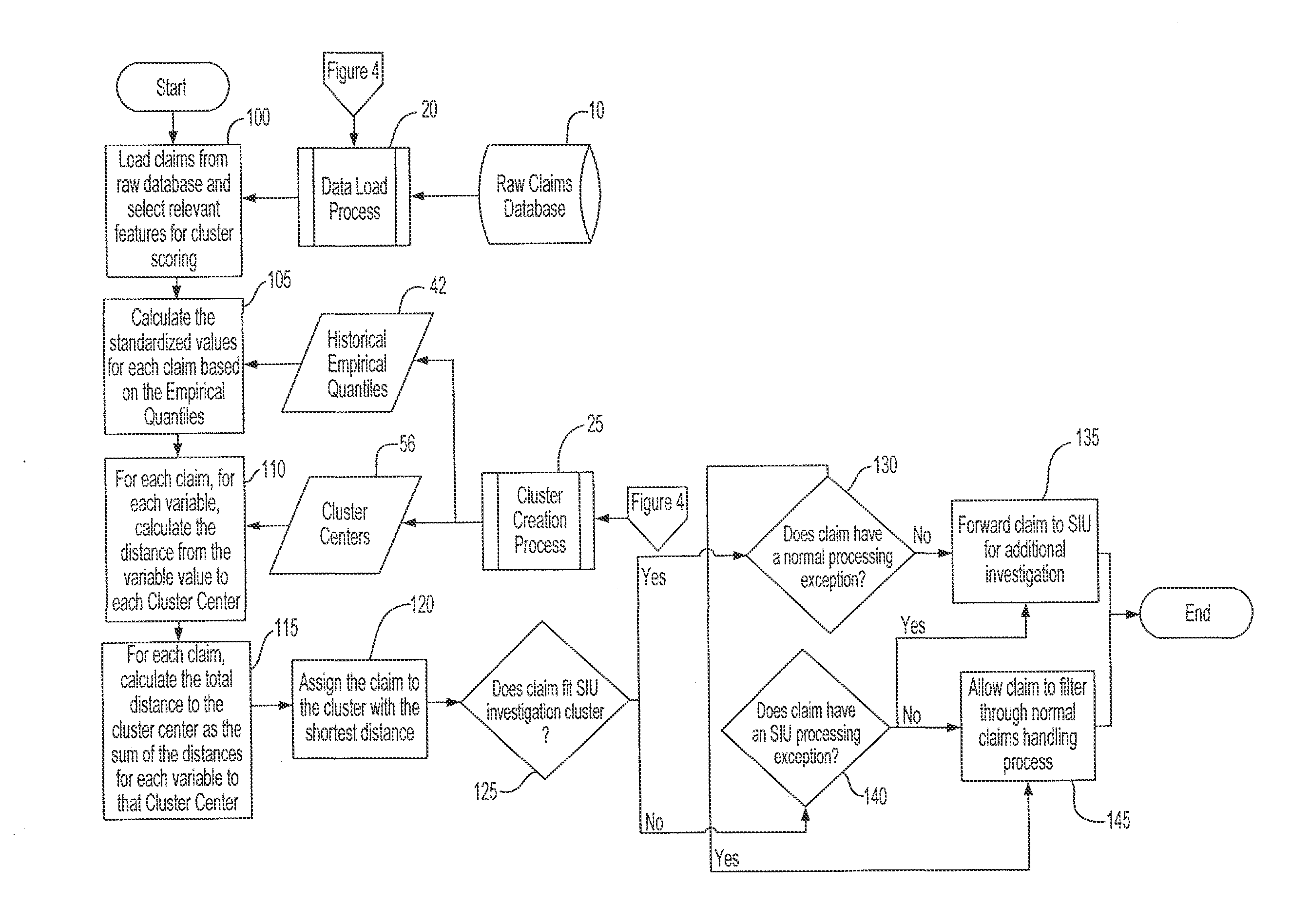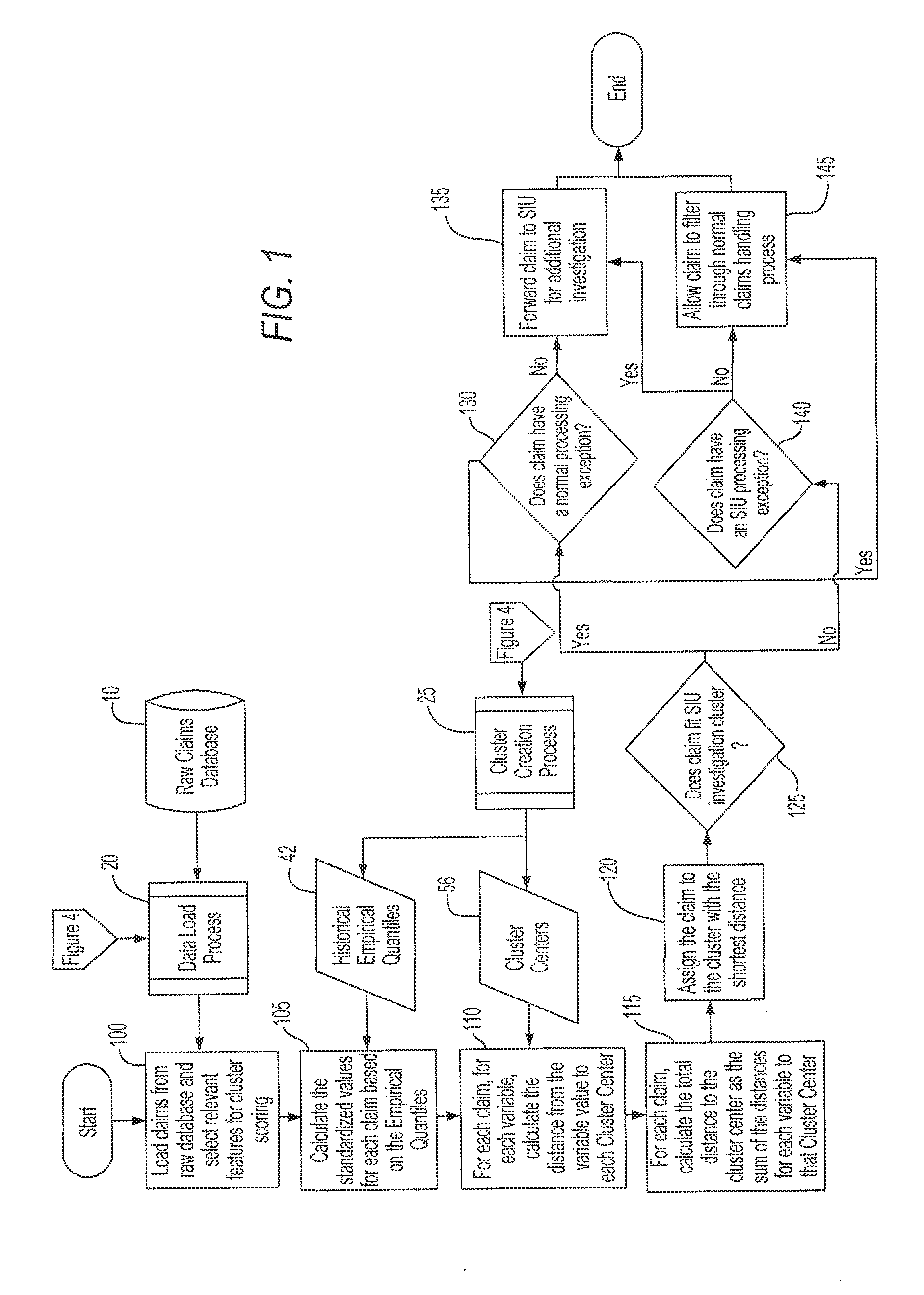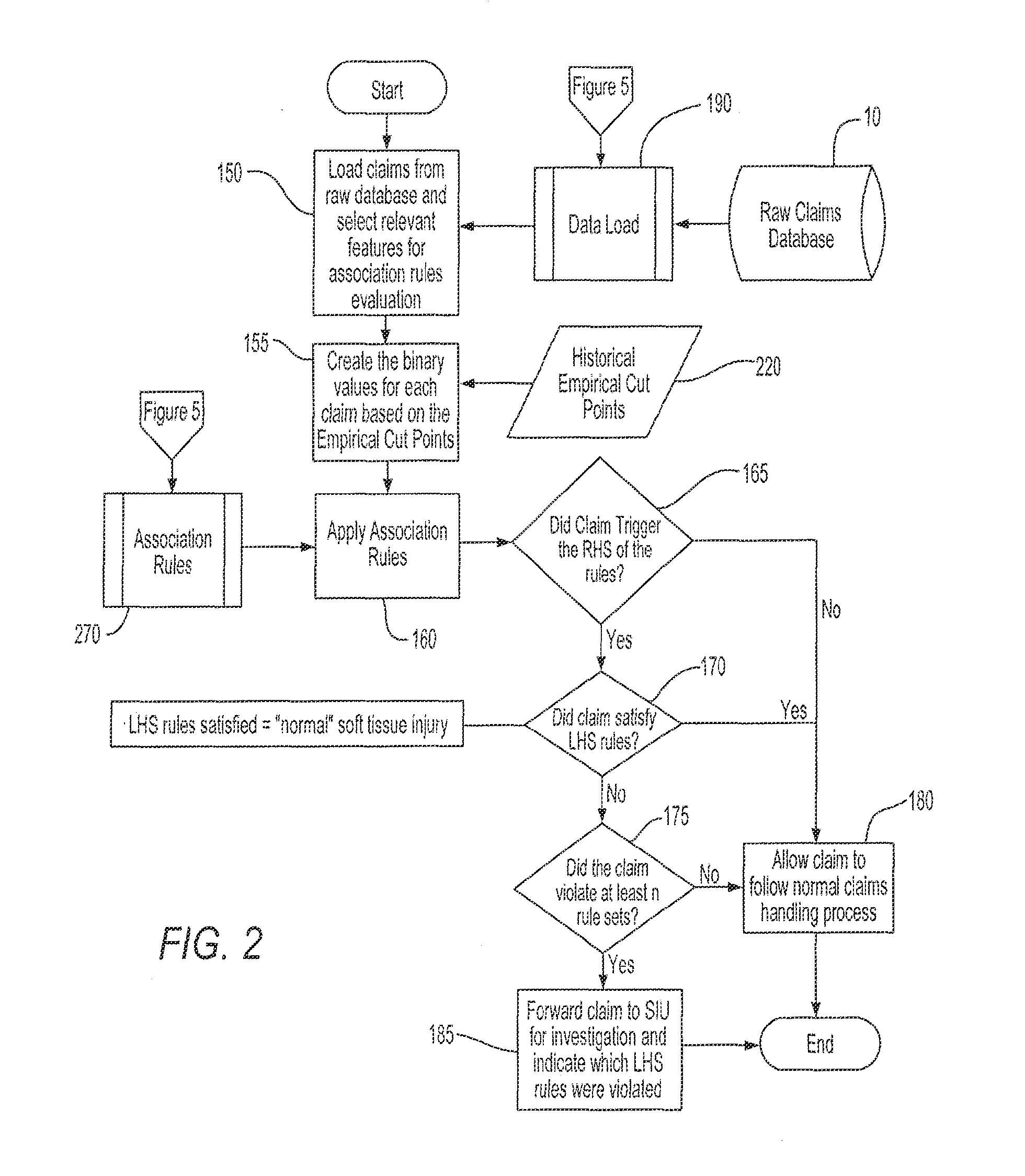Fraud detection methods and systems
- Summary
- Abstract
- Description
- Claims
- Application Information
AI Technical Summary
Benefits of technology
Problems solved by technology
Method used
Image
Examples
ui example
Association Rule Creation:
[0423]Next described is an exemplary process of creating association rules for fraud detection in Unemployment Insurance (UI) claims. The goal of the association rules is to create a set of tripwires to identify fraudulent claims. A pattern of normal claim behavior is constructed based on the common associations between the claim attributes. For example, 75% of claims from blue collar workers are filed in the late fall and winter. Probabilistic association rules are derived on the raw claims data using a commonly known method such as the frequent item sets algorithm (other methods would also work). Independent rules are selected which form strong associations between attributes on the application, with probabilities greater than 95%, for example. Applications violating the rules are deemed anomalous and are process further or sent to the SIU for review.
Input Data Specification
[0424]Example Variables:[0425]Eligibility Amount[0426]Transition Account[0427]Appl...
PUM
 Login to View More
Login to View More Abstract
Description
Claims
Application Information
 Login to View More
Login to View More - R&D
- Intellectual Property
- Life Sciences
- Materials
- Tech Scout
- Unparalleled Data Quality
- Higher Quality Content
- 60% Fewer Hallucinations
Browse by: Latest US Patents, China's latest patents, Technical Efficacy Thesaurus, Application Domain, Technology Topic, Popular Technical Reports.
© 2025 PatSnap. All rights reserved.Legal|Privacy policy|Modern Slavery Act Transparency Statement|Sitemap|About US| Contact US: help@patsnap.com



